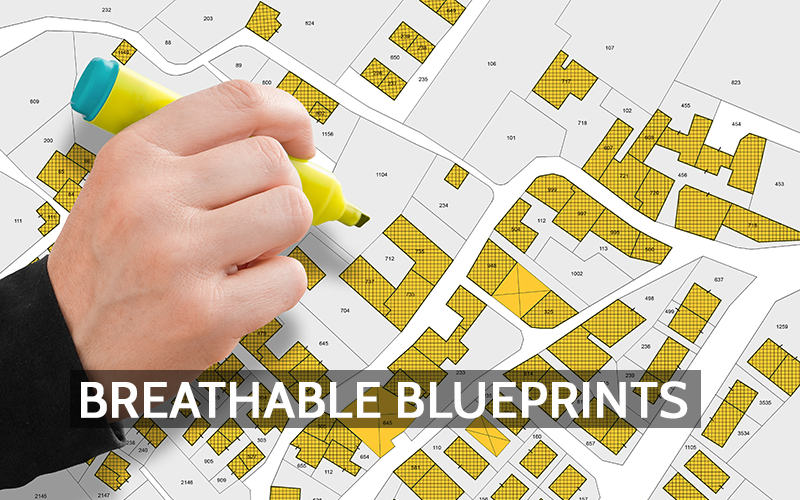Urban planning plays a pivotal role in shaping the air quality of our cities. Civil engineers and urban planners must navigate a complex array of considerations to design environments that promote public health and comply with regulatory standards. In the United States, the Clean Air Act (CAA) serves as the cornerstone for air quality regulations, providing essential guidance for urban development. Additionally, emerging initiatives are fostering collaboration among planners, policymakers, and engineers to address air quality in new construction and urban development.
Key Considerations for Urban Planners to Ensure Good Air Quality
- Land Use and Zoning: Strategic land use planning is fundamental to minimizing air pollution. By separating industrial zones from residential areas and promoting mixed-use developments, planners can reduce the proximity of pollution sources to populations. This approach not only lowers exposure to harmful emissions but also encourages sustainable transportation options, thereby decreasing vehicular pollution.
- Transportation Infrastructure: Transportation is a significant contributor to urban air pollution. Planners aim to design efficient public transit systems, develop pedestrian-friendly pathways, and create cycling infrastructure to reduce reliance on personal vehicles. Implementing traffic management strategies, such as congestion pricing1 and dedicated bus lanes, further alleviates traffic congestion and lowers emissions.
- Green Spaces and Urban Forestry: Integrating green spaces and urban forests into city landscapes offers natural air filtration, absorbing pollutants and releasing oxygen. These areas also mitigate the urban heat island effect, which can exacerbate air pollution. However, planners must select appropriate vegetation, as certain tree species can emit volatile organic compounds that may contribute to ozone formation under specific conditions2.
- Building Design and Orientation: The design and orientation of buildings influence air flow and pollutant dispersion. Incorporating ventilation corridors and optimizing building heights and spacing can enhance natural ventilation, dispersing pollutants more effectively. Utilizing materials and technologies that improve energy efficiency also reduces emissions from heating and cooling systems.
- Industrial Emission Controls: Regulating industrial emissions through permitting processes and enforcing the use of pollution control technologies is crucial. Planners collaborate with environmental agencies to ensure that industries comply with emission standards, thereby protecting air quality in surrounding communities.
Regulatory Framework: The Clean Air Act
The Clean Air Act (CAA) is the primary federal law governing air pollution control in the United States. It authorizes the Environmental Protection Agency (EPA) to set limits on specific air pollutants, including those emitted by industrial facilities and vehicles. The CAA also mandates the development of State Implementation Plans (SIPs), which outline how each state will achieve and maintain national air quality standards. Urban planners must align their projects with these SIPs to ensure compliance with federal and state air quality regulations.
The EPA provides guidance documents to assist planners in integrating air quality considerations into urban development. For instance, the “Area Source Rule Implementation Guidance” offers strategies for controlling emissions from smaller sources that collectively impact urban air quality3.
Emerging Initiatives and Collaborative Efforts
Recent initiatives signal the importance of interdisciplinary collaboration to address air quality in urban planning:
- Integrated Air Quality and Greenhouse Gas Management Plans: Regions like Metro Vancouver have developed comprehensive plans that address both air quality and climate change. These plans set goals to protect public health, improve visual air quality, and minimize contributions to global climate change4.
- Smart Urban Planning: The integration of smart technologies in urban planning, including the use of data analytics and IoT devices, helps in optimizing traffic flows, reducing congestion, and planning for cleaner industrial practices. This approach facilitates a holistic view of urban management, where air quality considerations are embedded in broader city planning efforts5.
- Urban Green Space Initiatives: The World Health Organization considers urban green spaces as important to human health. These areas have a positive impact on mental and physical health. Urban open spaces often include trees or other shrubbery that contribute to moderating temperatures and decreasing air pollution6.
Ensuring good air quality through urban planning requires a multifaceted approach that integrates land use strategies, transportation planning, green infrastructure, and adherence to regulatory frameworks like the Clean Air Act. By fostering collaboration among civil engineers, urban planners, policymakers, and the community, cities can develop environments that promote public health and environmental sustainability.
Related Articles:
Insights into Government and Private Initiatives in China
References:
- https://congestionreliefzone.mta.info/
- https://www.sciencedirect.com/science/article/abs/pii/S0269749113001310
- https://www.epa.gov/compliance/area-source-rule-implementation-guidance
- https://metrovancouver.org/services/air-quality-climate-action/Documents/clean-air-plan-2021.pdf
- https://www.devdiscourse.com/article/science-environment/2848388-urban-air-quality-management-policies-and-technologies-for-cleaner-cities
- https://en.wikipedia.org/wiki/Urban_green_space


